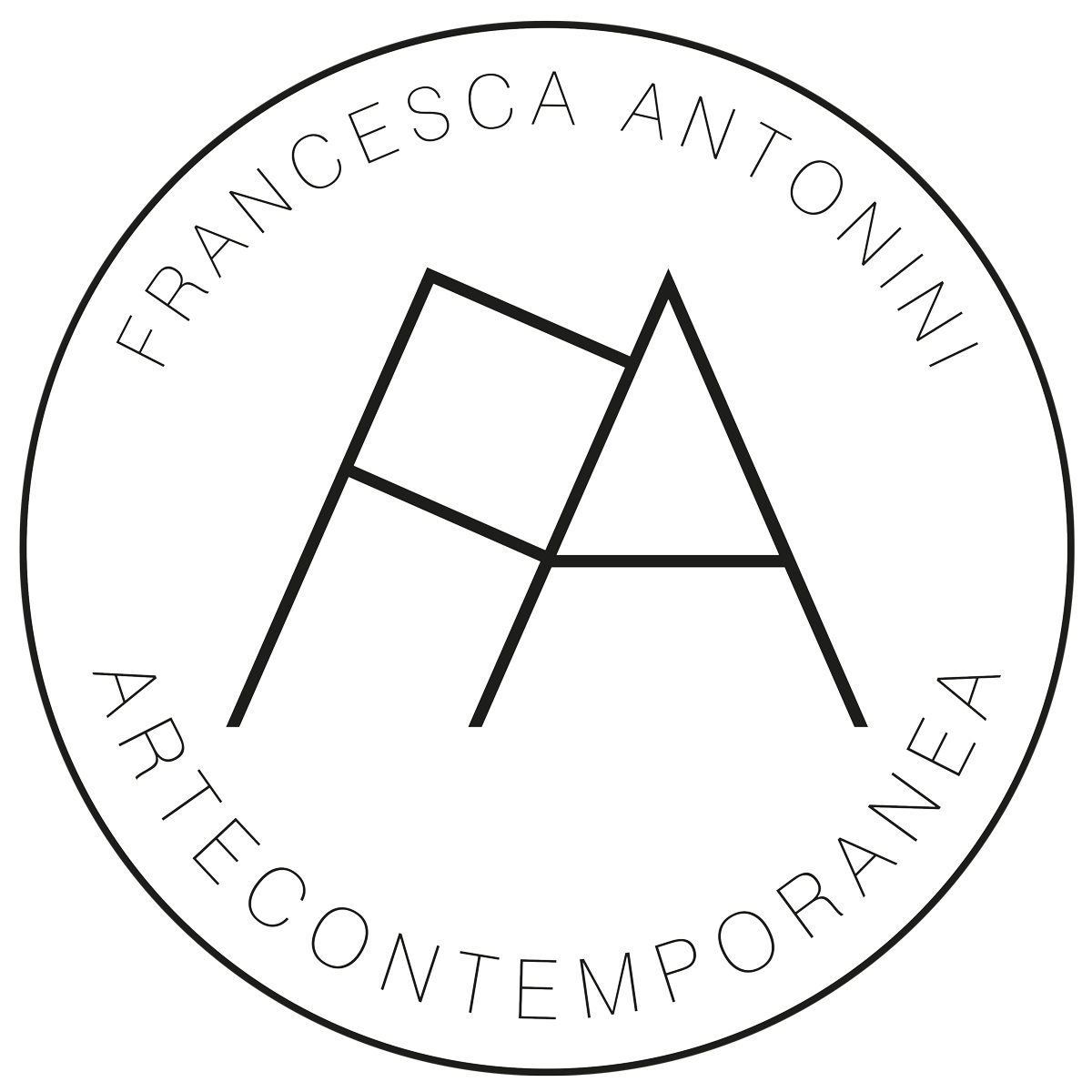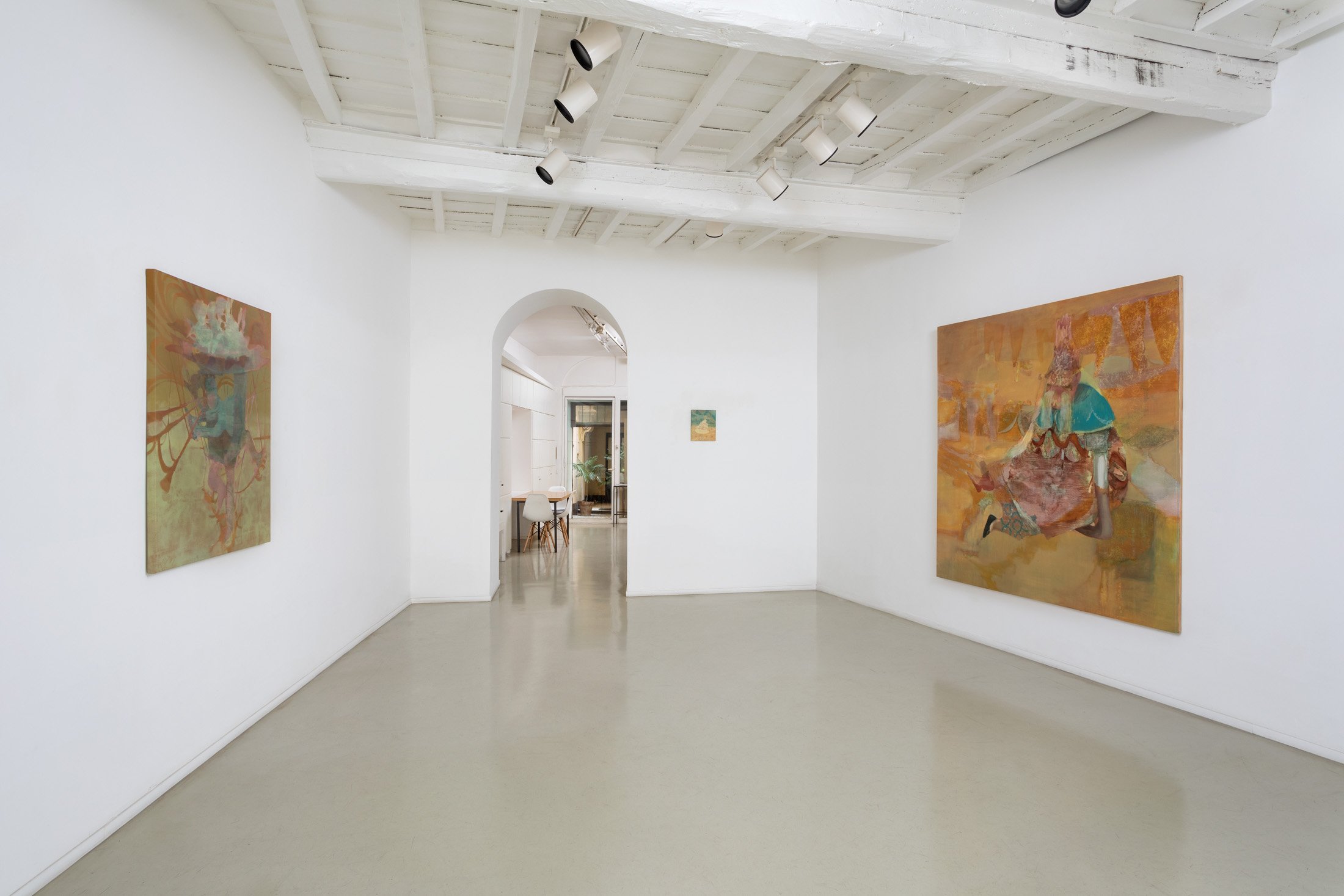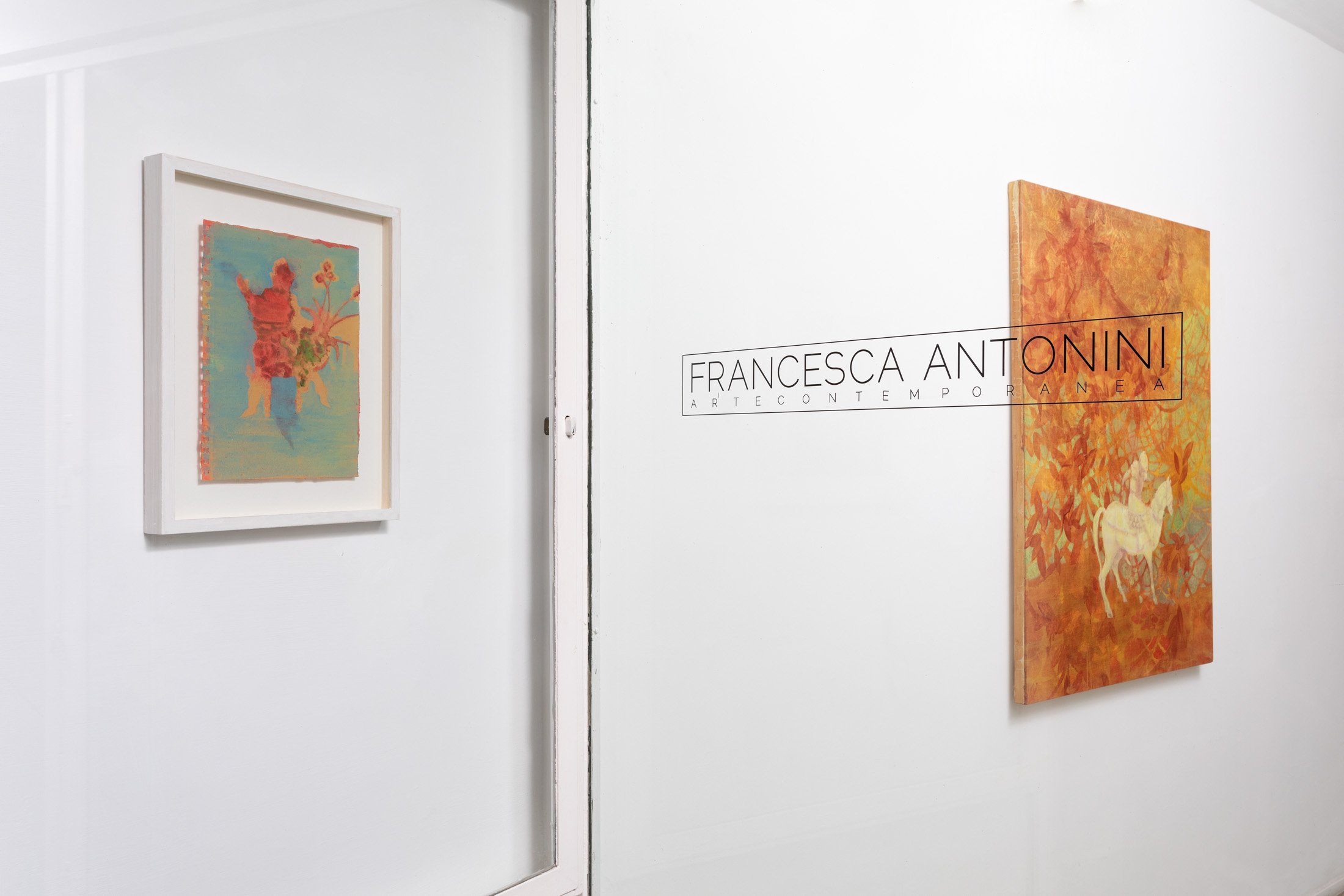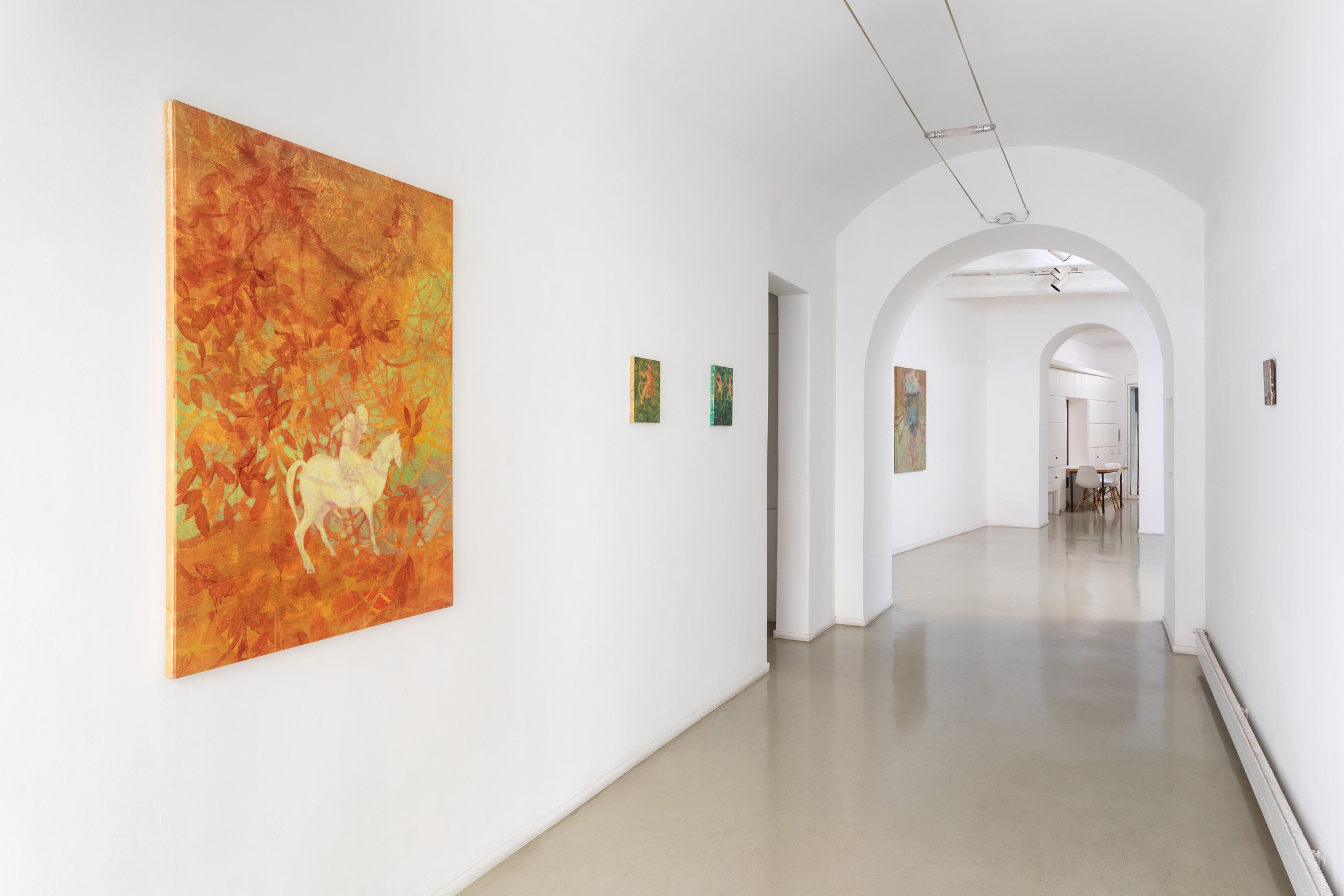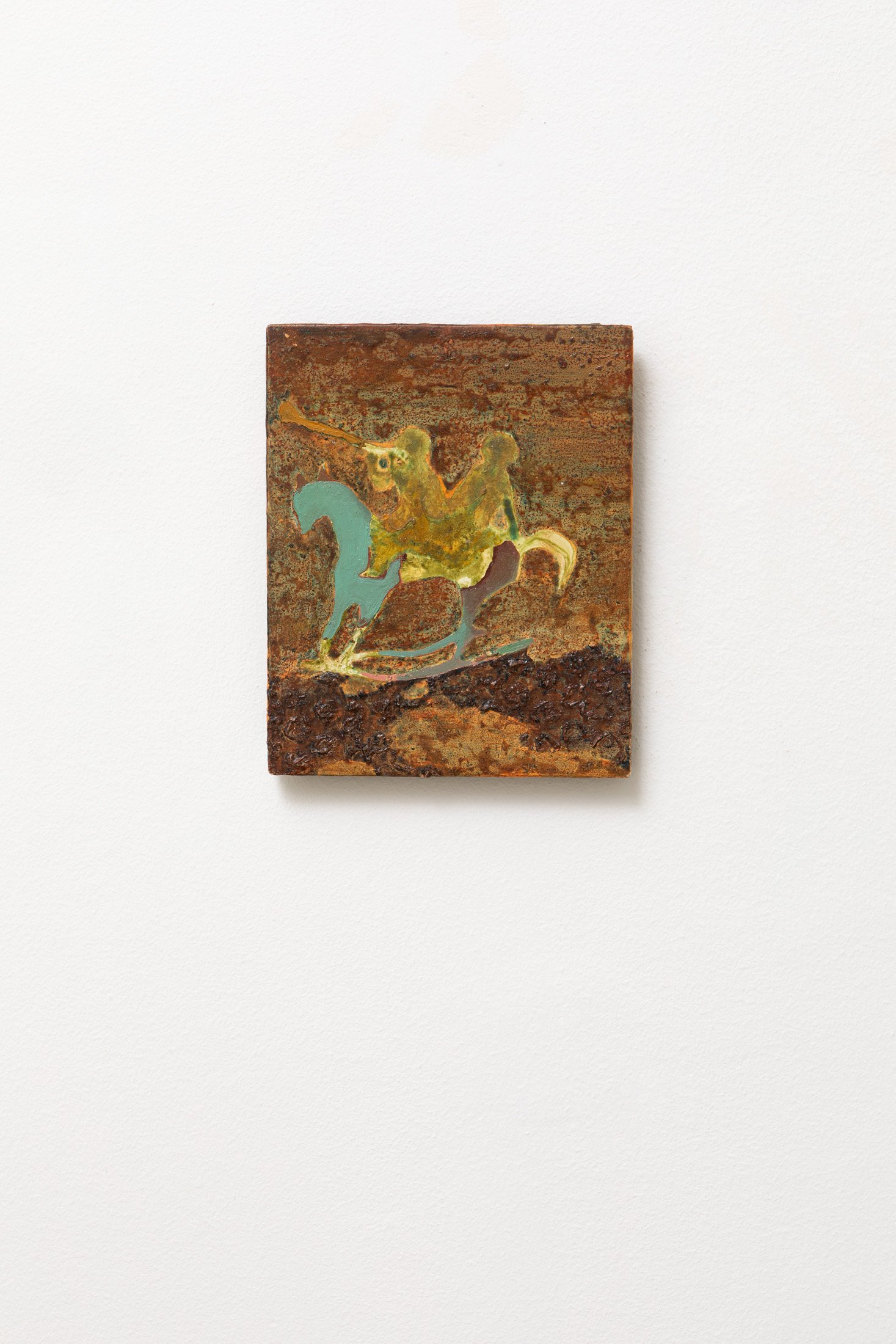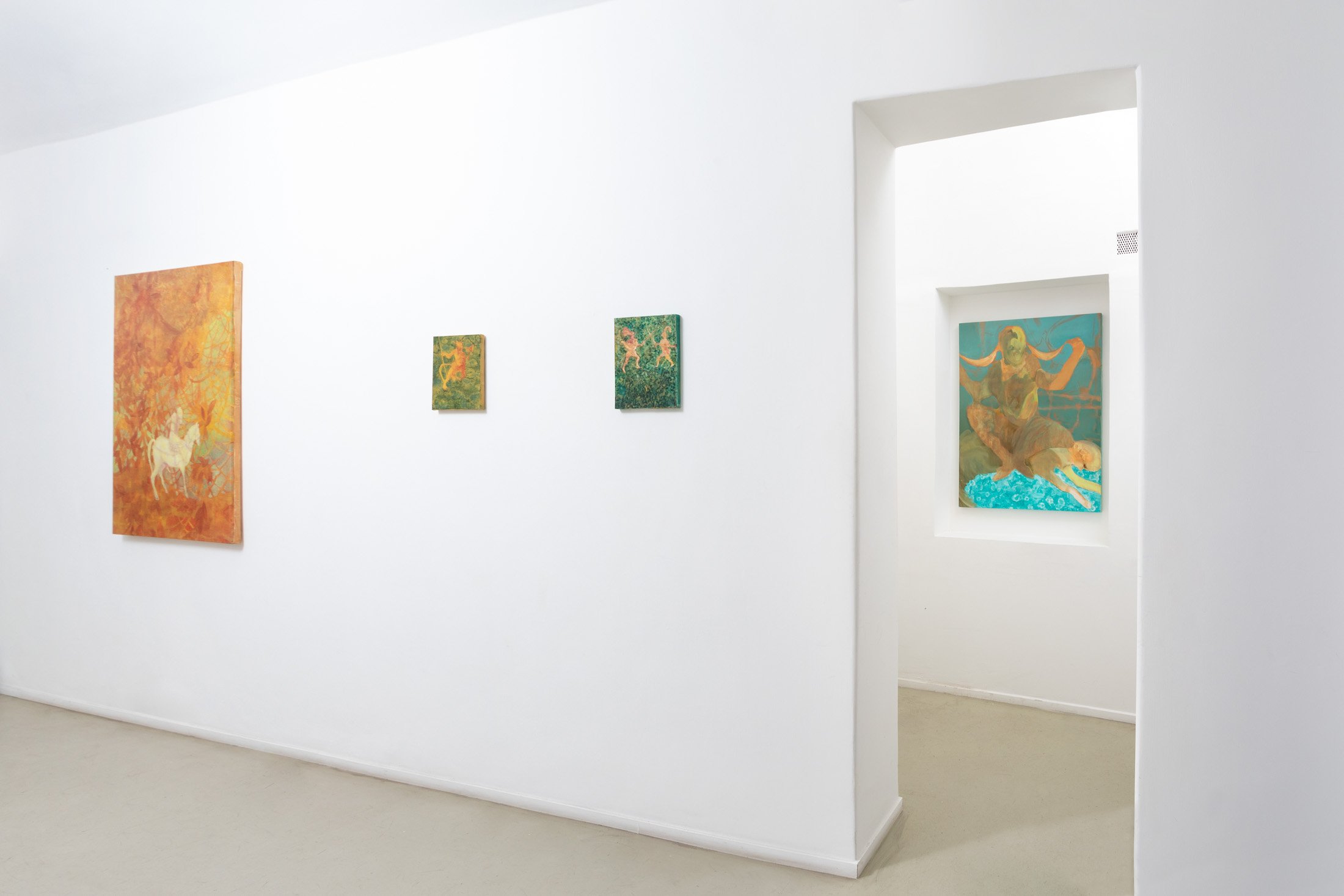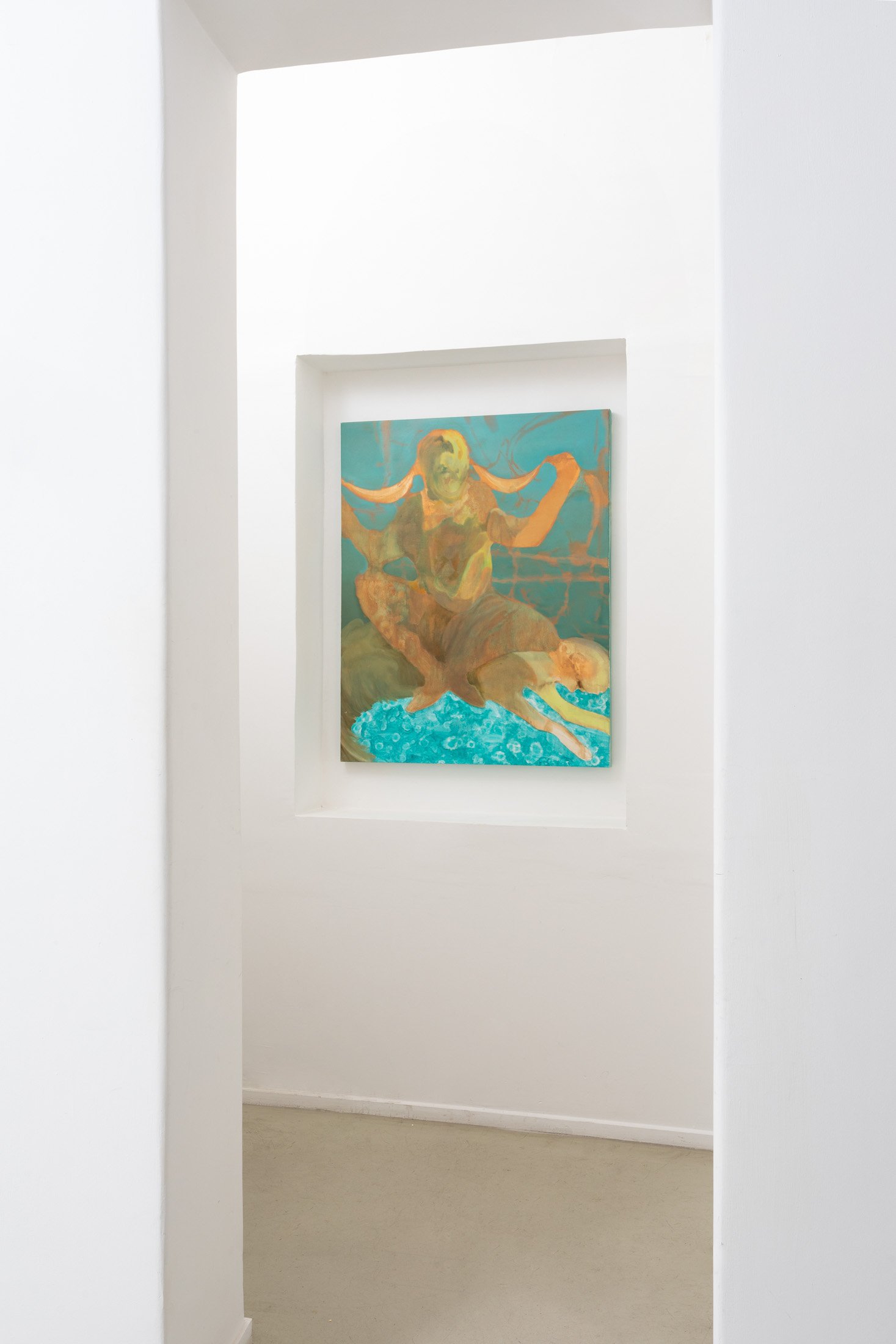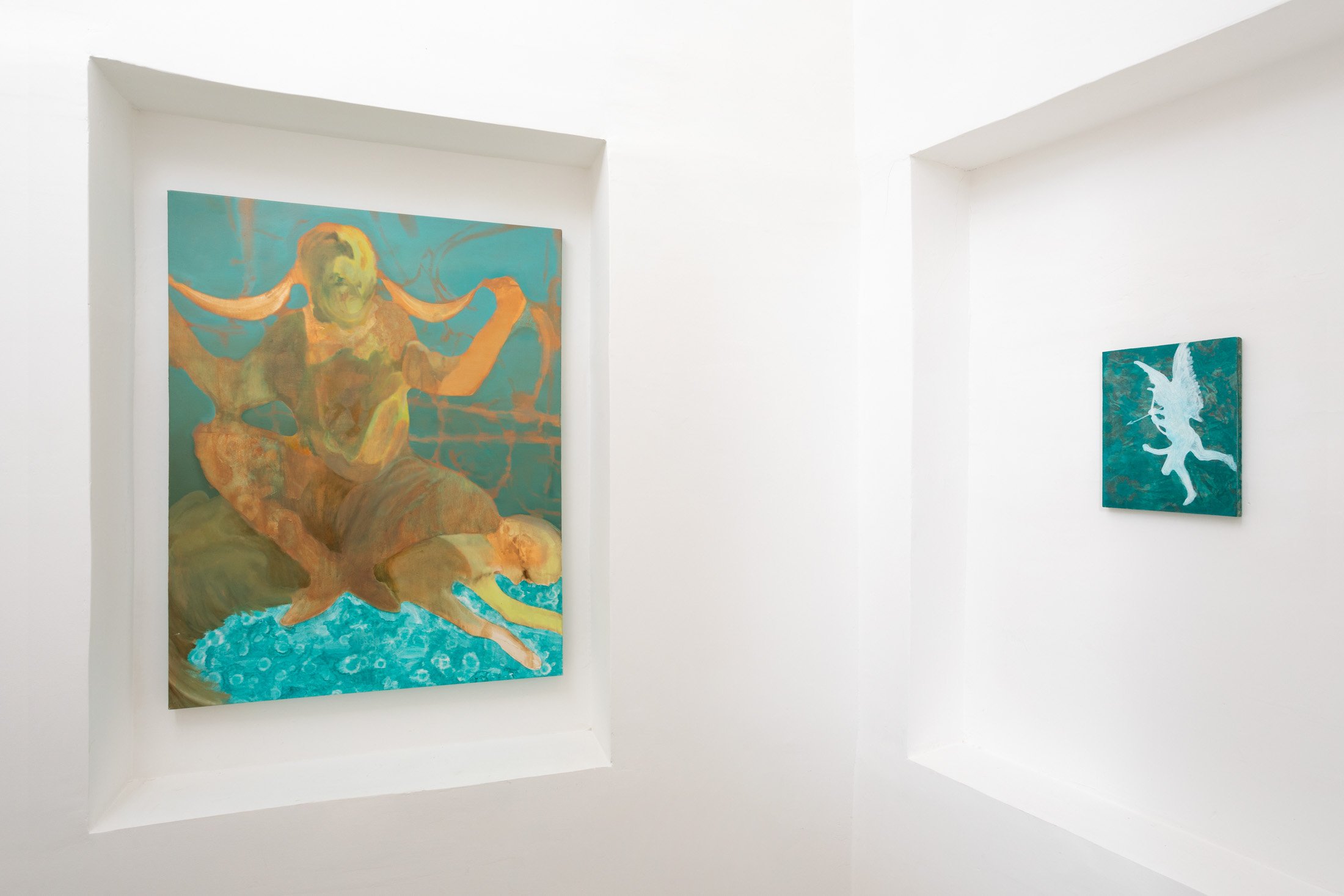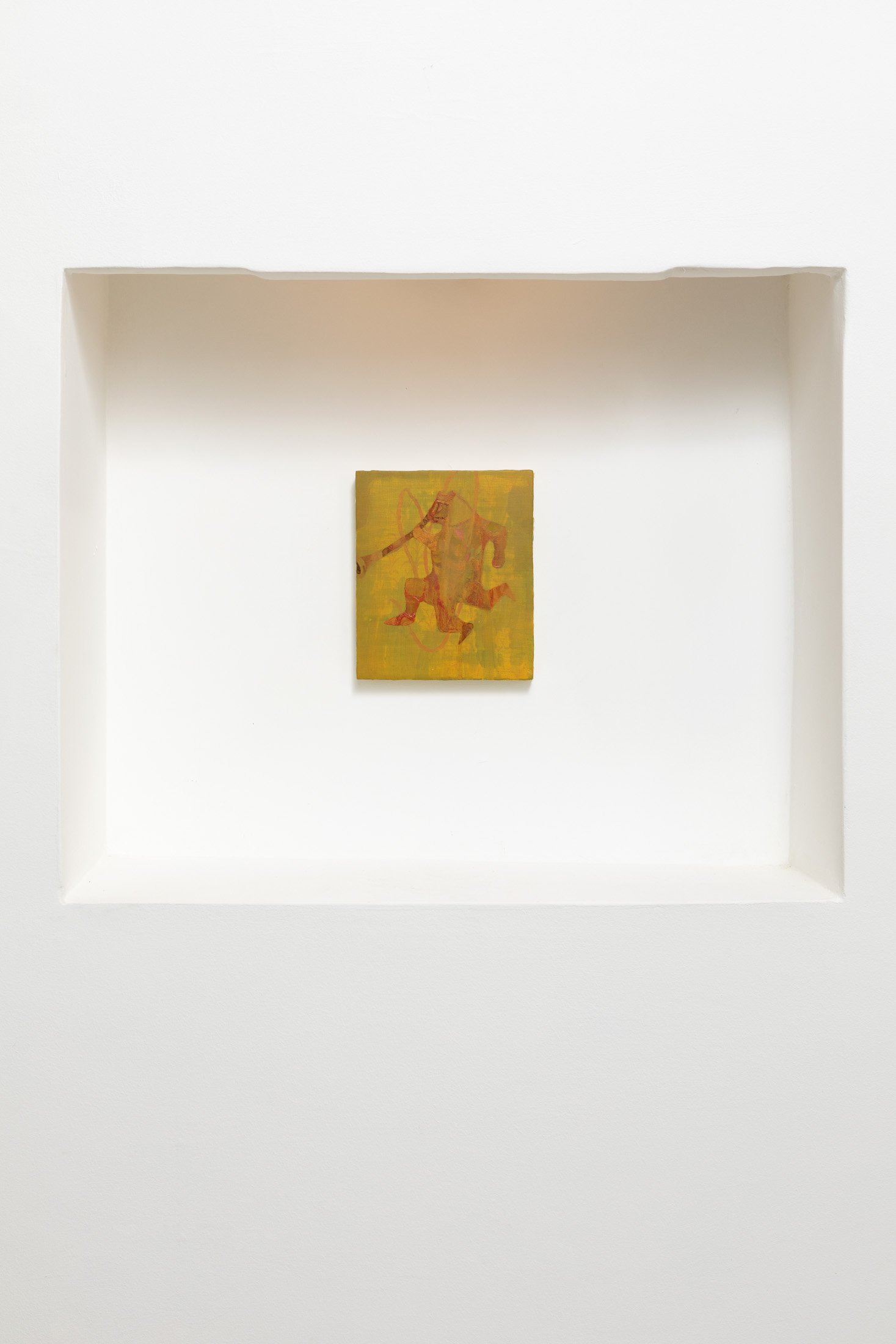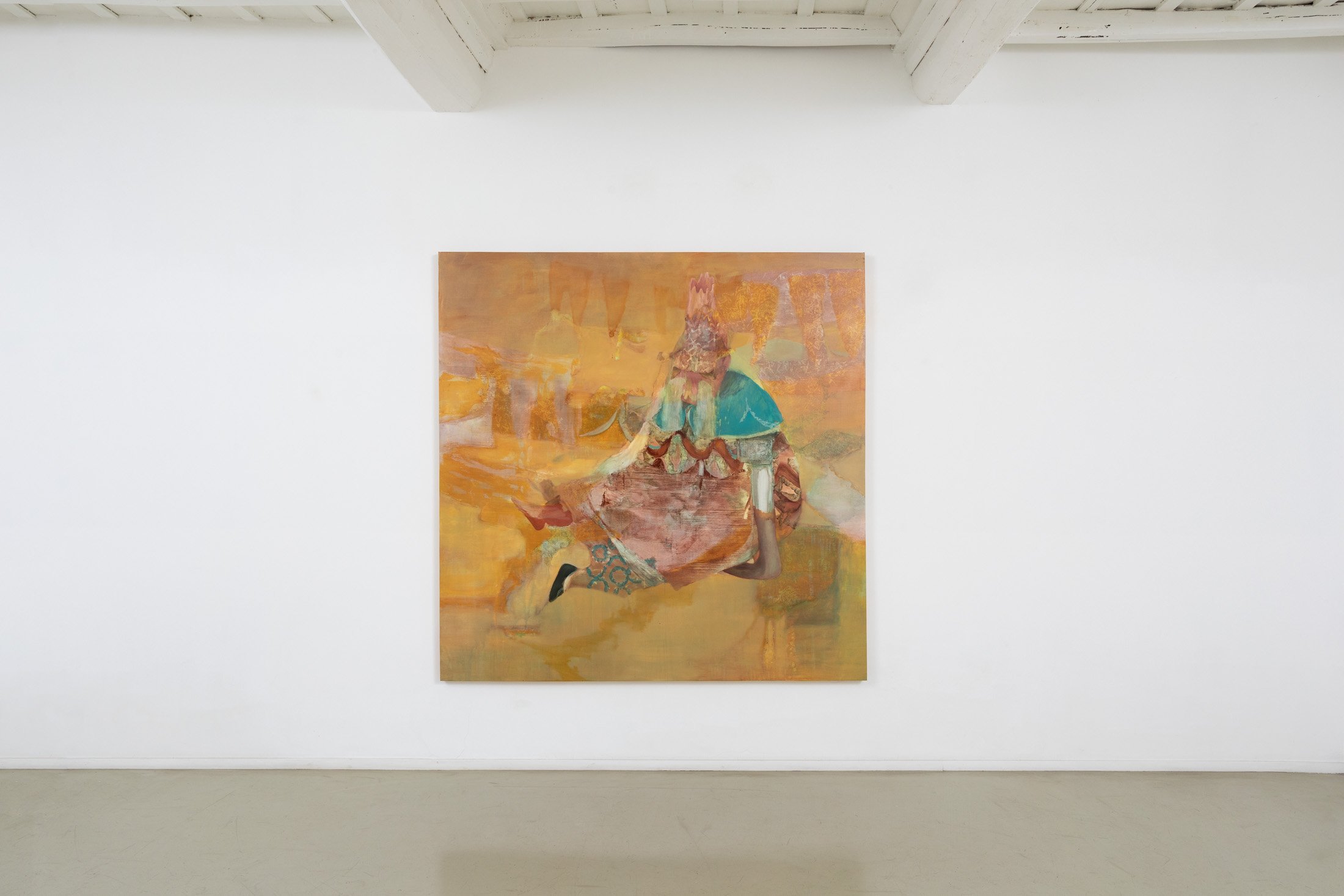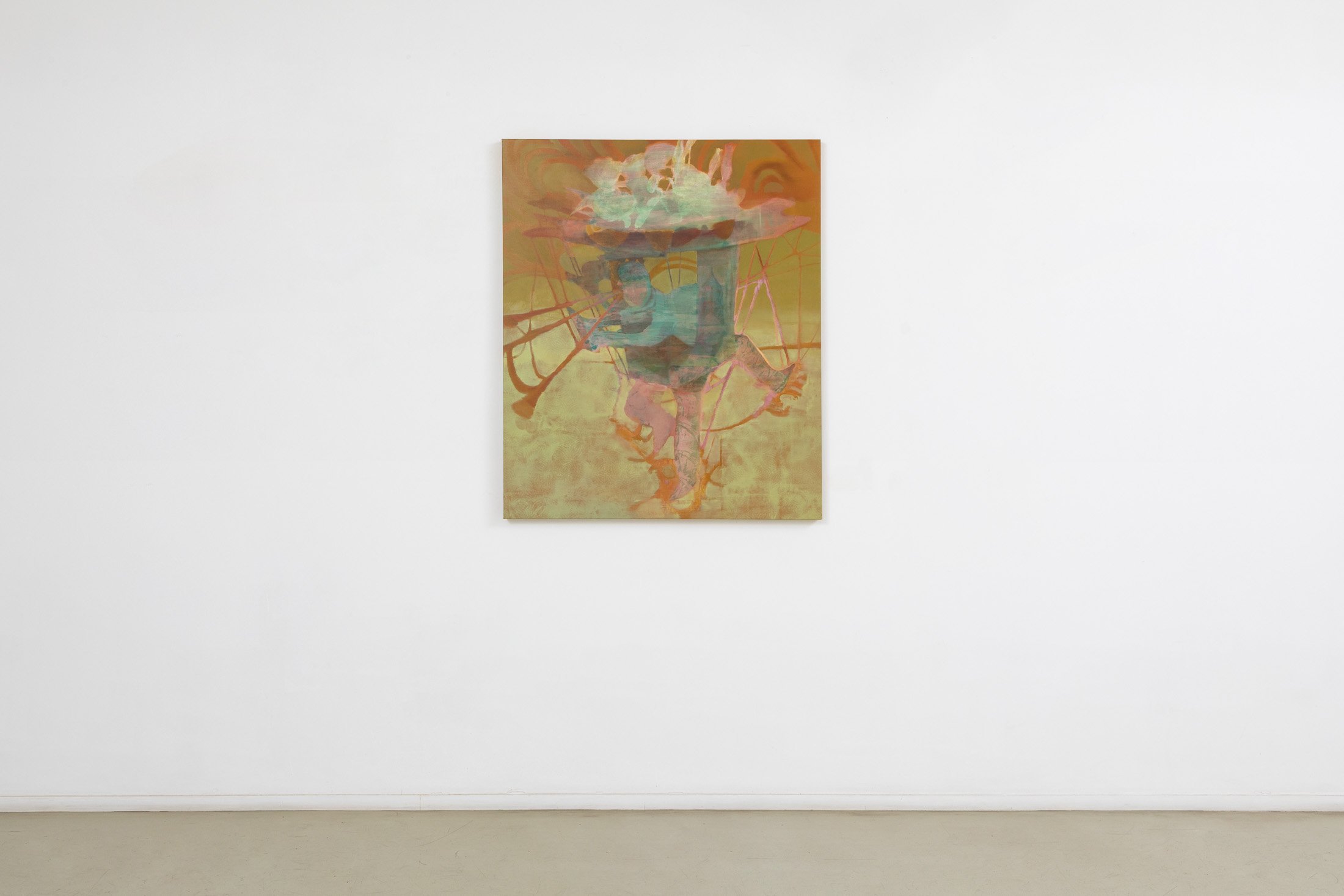L’animale più silenzioso del mondo
FRANCESCO CASATI
OPENING WEDNESDAY MAY 31ST 2023
UNTIL SATURDAY OCTOBER 14TH 2023
L'animale più silenzioso del mondo
Edoardo Monti
In the universe of Francesco Casati (Verona,1990) we are on a carousel of air and light.
Just like silence stands for music, so suspended space stands for the figures in paintings and drawings: without it there would be no harmony. Thanks to a delicate balance that eludes the concept of time, we can enjoy the subjects depicted and the space that surrounds them.
Graduality, couple relationships, fluctuating: the starting points of Casati's research, always filled with ironical elements, which originate in thoughts and reasoning generated by the observation of social aspects, reworked with a cold mind in front of a notebook or a still blank canvas. The first stage of the self-questioning process starts with sketches and drawings, a language the artist is familiar with and less afraid to speak.
He pours intimate elaborations into diaries, sometimes guided by the need to use a specific colour. This colour then goes beyond the drawing, takes shape on canvas, transforms itself into a hinted at but present pattern, which now arises and is completed without the aid of reference images, now develops on visual reminiscences linked to the past and personal memory. It is not merely a research as a starting point, but rather the intention to make a tactile impression, to give the opportunity to touch something just by looking at it. Sometimes a drawing becomes another drawing and then still another, until it makes sense in its own right or as a starting point for his canvases, which recently have been getting bigger and bigger: a self-imposed challenge, in an attempt to get out of his comfort zone.
Casati creates and directs his own time, giving it to the subjects that inhabit the paintings. The combined use of oil and acrylic paints becomes a tool with which he marks moments, suspends seconds and compresses the space, that is inseparable from time itself. We are attracted by a memory, by the passage of an image that the artist decides how and when to show, cover, pass through, deposit, float, traverse. The subjects have less of a stage presence, they are filled with spatial rather than detailed existence. There is no lack of image, in fact we can perceive a sense of participation through the absence of detail, the veiling, various stages of someone or something manifesting themselves at different moments of their existence.
Although these works are inspired by social issues, which Casati experiences, feels, discusses, reads, and which settle and re-emerge during the act of drawing, they do not clearly manifest this. We are dealing with masks, which very often borrow figurative elements belonging to the animal world. The animal and the human merge into a mask, a medium, performing an action no matter whether they are devoid or laden with feelings. The symbolism steps in not firmly, to impose an answer, but rather to provoke more questions and to invite us to participate in the dialogue.
There is a microcosm in each of the works, but there is something that makes them belong to a shared macrocosm. A larger show, the life, an allegory: a comedy of sharing, where, however, the intensity of each character is such that it can be analysed in depth, celebrated and presented independently. These are not mere extras but protagonists, mini visual biographies that make up the history of a common period. Little big stories that are part of a single jigsaw puzzle, without taking strength away from the single theatrical element.
These protagonists, subjects-objects, do not exist in a defined timeline, but in a time of their own: they are words within a collective poem, they exist to tell us that time is there and passes, they go along with a movement that comes out of figuration by playing with evocative images. An inseparable link is established between reasoning, narration and deprivation, aimed at making people read something more than the surface.
The uncertainty, conveyed by the absence of solid bases on which these figures stand, for Francesco Casati is necessary in order to avoid fixed points that can only limit the gaze. They float not to affirm something but rather to show a question and leave possibilities. They provide themes, situations and arrows thrown. They allow time, for the artist as well as the viewer, to elaborate. It is a responsibility assumed by the subjects in the paintings and through them by Casati, for whom it is essential not to have too many certainties and not to close too many doors, but leave them ajar.
A particularly significant - final but not finalising - factor is the process of formulating the titles of the works. Francesco Casati is not inspired by a language of words, but of images, so as not to bind us too much to a single interpretation, preferring instead a visual and timeless freedom. Through language, he actively selects which aspect to show, using words to offer a key to interpretation and choose a direction that remains non-binding. With text, we are helped to draw conclusions about what the image leaves open, while remaining free.
We learn to remove the mask-subjects from the seriality to which they belong, to endow them with an individuality starting from their formal qualities. We are led through a pondered path and the encounter of the subject with the audience is theatricalised: these are the common principles that inhabit Casati's time-space.
PRESS REVIEW
